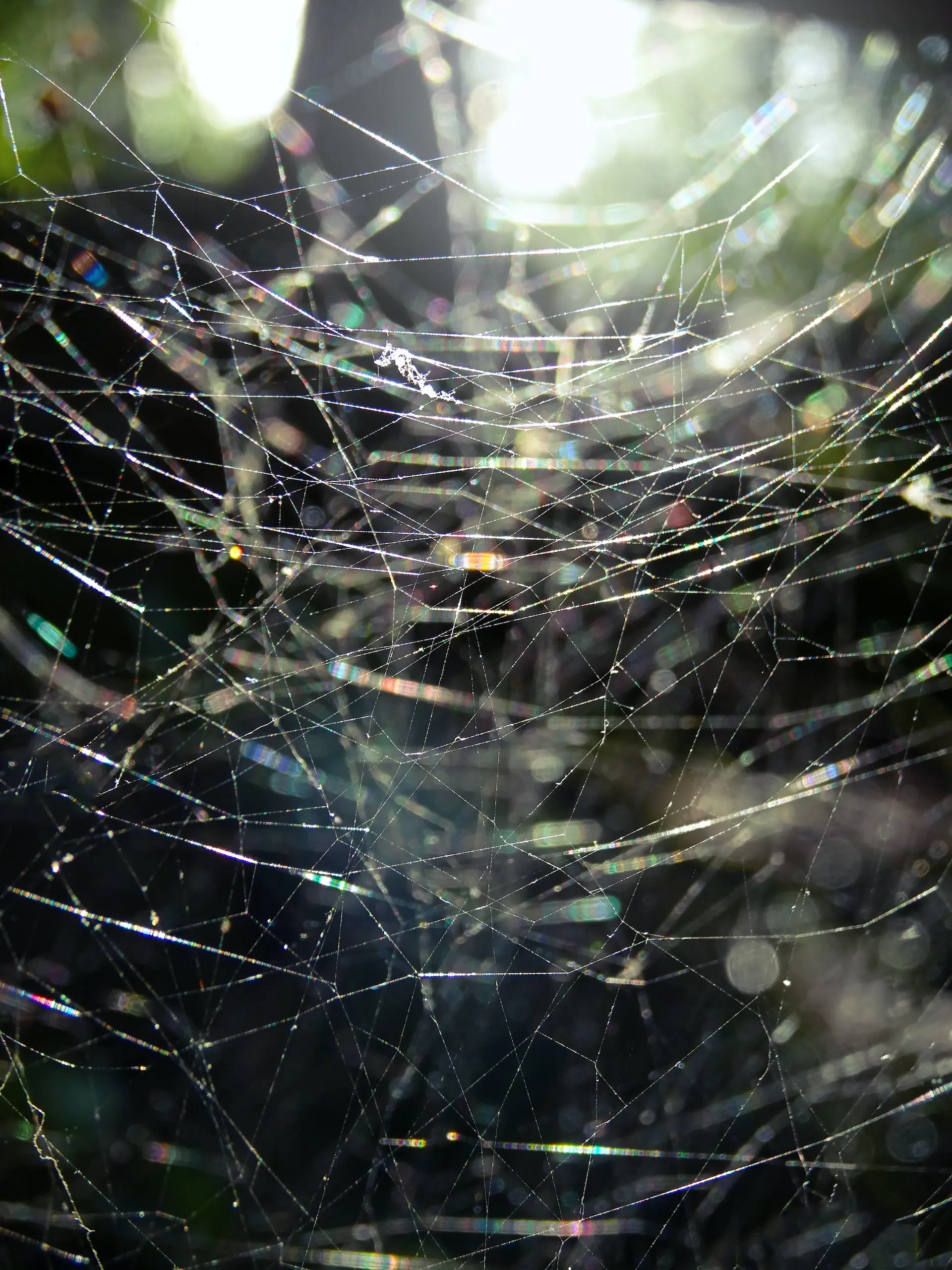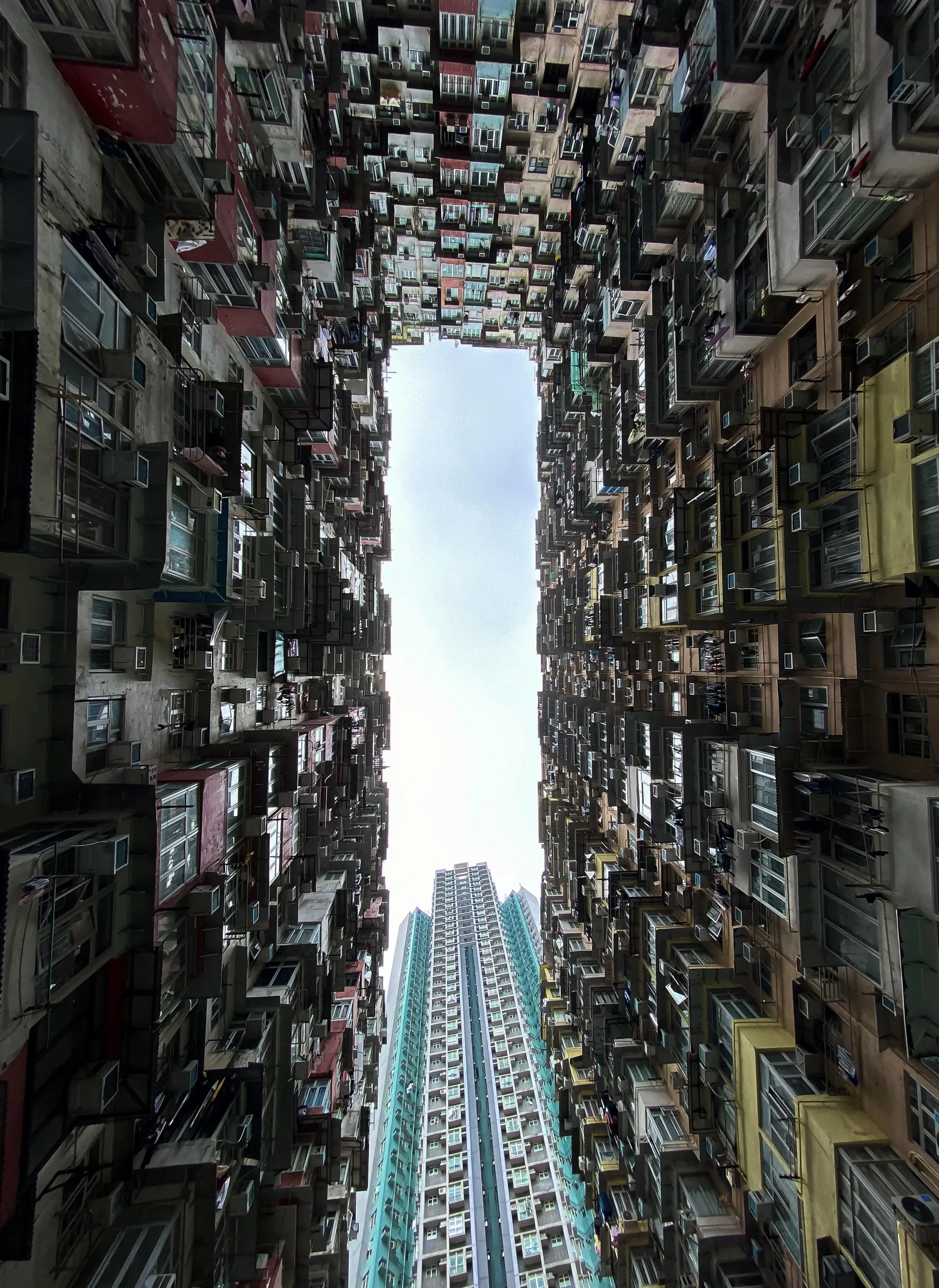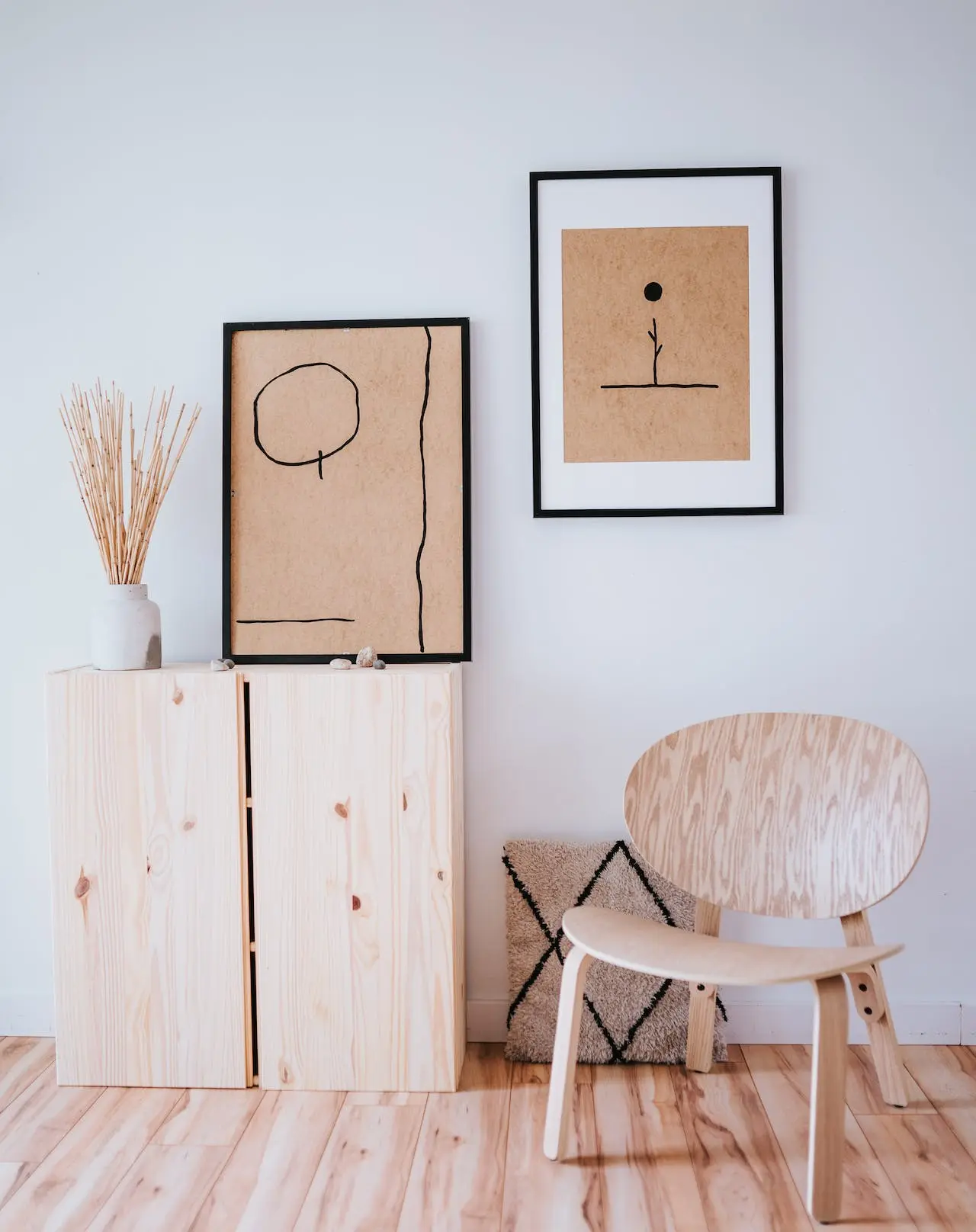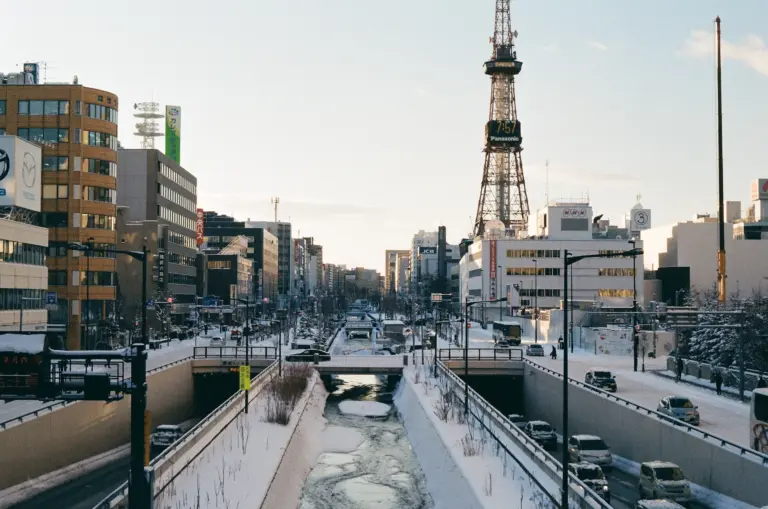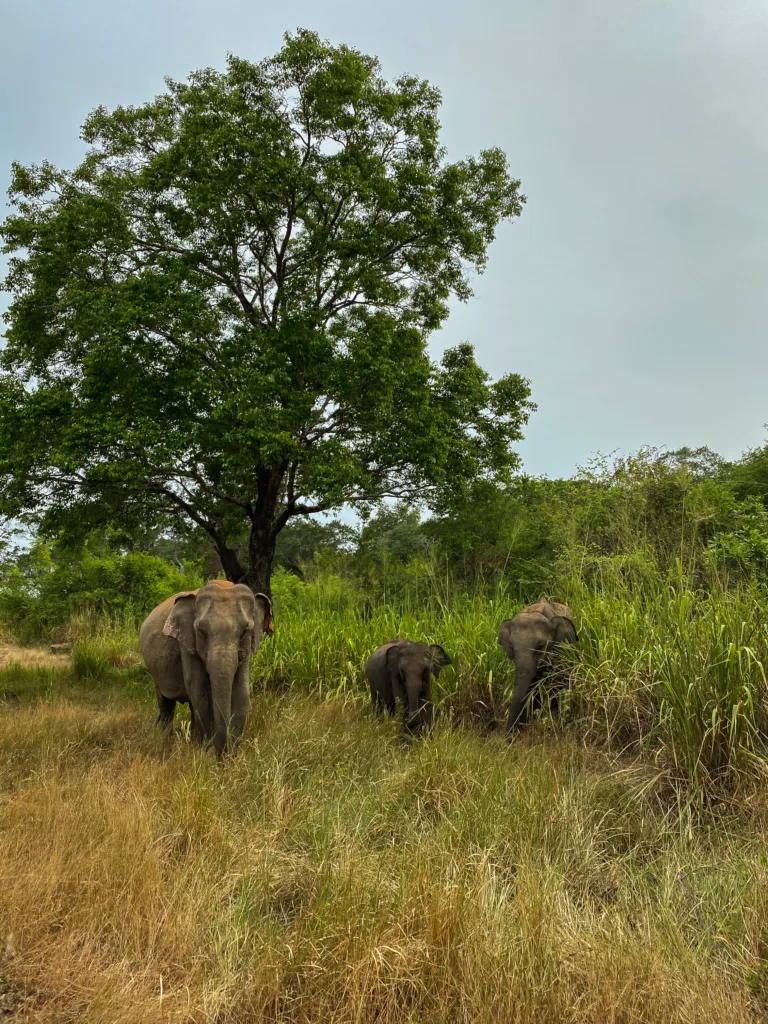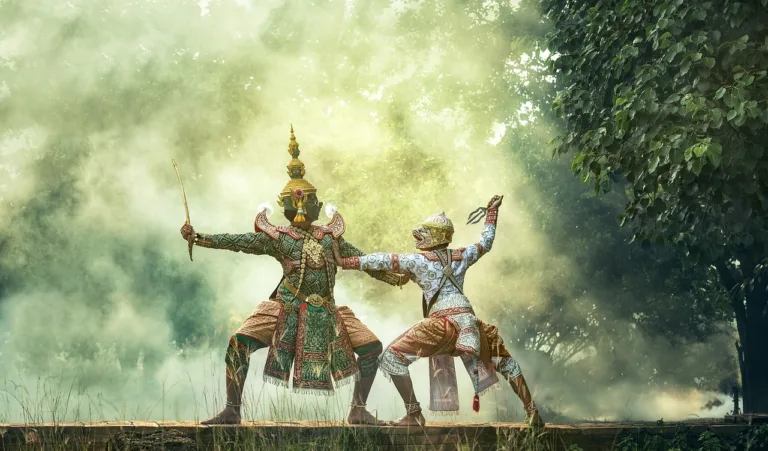Are you planning a trip to the Philippines and wondering whether Manila is worth a visit? As someone who’s been there, I can tell you that the bustling capital city definitely deserves a spot on your itinerary.
With a population of 13 million people, Manila is one of the largest cities in Southeast Asia, but it’s also unique in its own way. Sure, the country’s beautiful islands such as Cebu, Bohol and El Nido, may be the main draw for many travelers, but don’t sleep on Manila! Whether you have a layover or a few days to explore, Manila still has a lot to offer, from its rich history and modern attractions, not to mention the world-class sunsets of Manila Bay!
In this article, I’ll take you on a tour of the best places and things to do in the city, so you can make the most of your visit. We’ll go in-depth, from hidden gems to local experiences, I’m sure you’ll find a good time in Manila. So, let’s get started and discover what this vibrant metropolis has in store for you!
Table of Contents
ToggleIs Manila Worth It?
Manila is a experience on its own and shows a side of the Philippines that you won’t be able to see anywhere else. While it’s true that Manila can be overstimulating with its traffic, crowds, and noise, it’s also a city that’s full of energy and life.
If you’re looking for a taste of urban Philippines, then Manila is definitely worth a visit. One of the things that makes Manila unique is its rich history and cultural heritage. From the Spanish colonial architecture of Intramuros to the modern skyscrapers of Makati, the city is a melting pot of different cultures and influences.
You can explore fascinating museums, art galleries, and historical sites that offer a glimpse into the country’s complex past. But Manila is not just about the past. It’s also a city that’s constantly evolving, with new developments and trends emerging all the time. You can find trendy cafes, hip bars, and stylish boutiques that cater to a young and dynamic crowd. And of course, the food scene in Manila is not to be missed! So while it’s true that Manila can be challenging at times, it’s a city that’s full of surprises and rewards for those who are willing to explore it.

History of Manila
So speaking of Spanish colonialism, let’s talk about Manila’s history for a minute. Manila has a rich and complex history. It was a colony of 3 different countries in a span of over 400 years!
The city was founded by the Spanish conquistador Miguel López de Legazpi in 1571, who named it “Ciudad de Manila” after the Muslim Rajah Matanda’s settlement of Maynila. Under Spanish rule, Manila became a major trading hub in Southeast Asia, with goods flowing in and out of the city from all over the world.
In 1898, after 300 years under Spanish rule, the United States acquired the Philippines from Spain as part of the Treaty of Paris, and Manila became the capital of the new American colony. The city underwent further changes under American rule, with the construction of new infrastructure and the introduction of new technologies.
During World War II, Manila was occupied by the Japanese Imperial Army from 1942 to 1945, after the US and Filipino forces were defeated. Manila was heavily damaged by bombing and artillery fire, and many historic buildings and landmarks were destroyed. After the war, the city was rebuilt to the modern city we see today.
Filipino Culture Overview
Filipino culture is a unique blend of indigenous, Spanish, and American influences, shaped by centuries of colonization and cultural exchange.
Family is an important aspect of Filipino culture, and many traditions and celebrations revolve around family gatherings.
From the classic balut to popular dishes like adobo, sinigang, and lechon, the Philippines foodscene is one-of-a-kind!
Filipino culture also has a strong emphasis on respect for elders. This is reflected in the use of honorifics such as “po” and “opo” to show respect. Filipinos are also known for their hospitality which you will most definitely feel as you’re welcomed with smiles all around the country.
If you’re interested in learning more about Filipino culture, check out my separate blog post that goes more in-depth!
Best Places to Visit in Manila

1. Intramuros
If there’s just one place you can visit in Manila then it’s gotta be Intramuros. Intramuros is a walled city located in the heart of Manila and is one of the top tourist attractions in the capital.
It was built by the Spanish colonial government in the 16th century and served as the center of political, social, and religious life during the Spanish colonial period. The word “Intramuros” means “within the walls” in Latin, referring to the massive stone walls that surround the city.
Inside the walls of Intramuros, you’ll find plenty of historical sites such as Fort Santiago, San Agustin Church and Baluarte de San Diego. If you’re looking for a more in-depth look at the sites and history of Intramuros, you can find it in this blog post.
Cost: Free
2. National Museum of Fine Arts
The newly renovated National Museum of Fine Arts was officially unveiled to the public in May 18, 2018 and since then has surpassed its former splendor as a treasure trove of art and culture. Located right beside Rizal Park, this museum is a must-visit destination if you’re interested in exploring the beauty of Filipino culture.
One of the most famous works on display is Luna’s “Spoliarium,” which won a gold medal at the Exposición Nacional de Bellas Artes in Madrid in 1884. The painting depicts the aftermath of gladiatorial combat in ancient Rome, and is a powerful commentary on the brutality of war and oppression with strong allegory towards the Spanish colonialism at that time.
But the National Museum of Fine Arts isn’t just a place to admire beautiful works of art. It’s also a place to learn about the country’s cultural heritage. The museum’s exhibits offer a glimpse into the country’s colonial history, its struggle for independence, and its rich cultural traditions and customs.
Cost: 150 PHP (2.5 USD)
3. Rizal Park (Luneta Park)
Rizal Park, also known as Luneta Park, is one of the best places to see how Filipinos spend their time. As you enter the park, you’re greeted by the towering bronze statue of Philippines’ national hero, Jose Rizal. The Rizal Monument stands tall at the center of the park, surrounded by beautiful gardens and fountains. The monument serves as a reminder of Rizal’s important role in the country’s fight for independence from Spanish colonial rule.
Jose Rizal is considered the national hero of the Philippines and is widely regarded as one of the most important figures in the country’s history. Rizal was a writer, a philosopher, and a revolutionary who fought for the rights and freedoms of his fellow Filipinos. Rizal’s most famous works include “Noli Me Tangere” and “El Filibusterismo,” which exposed the corruption and injustices of the Spanish colonial government. Fun fact: Take a look at your 1-peso coins and you’ll realize that it is actually Rizal’s face on it!
Walking through the park’s gardens, you’ll see a variety of blooms and greenery that offer a peaceful respite from the busy city life. Don’t miss the spectacular lights and sound show that starts around every 6PM as it is free for all!
Cost: Free

4. Manila Bay
If there’s one thing that Manila is famous for, it would be sunsets. And what better place to see it than Manila Bay? As the sun sets over Manila Bay, the sky transforms into a canvas of vibrant colors – shades of orange, pink, and purple that blend seamlessly into the horizon. The baywalk area along Roxas Boulevard is the perfect place to take in this stunning display of nature’s beauty. Couples stroll hand-in-hand, families gather for picnics, and street performers provide entertainment for all. It’s a lively and vibrant scene that’s a feast for the senses.
For those looking for a cultural experience, the Cultural Center of the Philippines is just a short walk from Manila Bay. The center is a hub of arts and culture in the city, with a variety of performances, exhibitions, and events throughout the year.
Manila Bay is also a great place to get some exercise while taking in the sights. Head on to the baywalk area whether you want to take a leisurely stroll, ride a bike, or jog, there’s plenty of space to move around and enjoy the views. And if you get hungry, there’s no shortage of options for food and drinks along the way.
Cost: Free
5. Minor Basilica of the Black Nazarene (Quiapo Church)
The Minor Basilica of the Black Nazarene, also known as Quiapo Church, is a historic and iconic church that’s a place of pilgrimage for millions of Filipinos who come to pray to the Black Nazarene, a revered statue of a dark-skinned Jesus Christ that’s believed to have miraculous powers.
The church’s history dates back to the 16th century when a group of Augustinian missionaries founded a church in the area. The current church building was constructed in the early 20th century and features a mix of Baroque and Renaissance architectural styles. The statue was brought to the Philippines from Mexico in the 17th century and has since become a symbol of faith and devotion for millions of Filipinos.
Every January 9th, the Feast of the Black Nazarene is celebrated with a grand procession, where devotees flock to the church to participate in the “Traslacion,” a procession that involves carrying the statue through the streets of Manila. The procession is one of the largest religious events in the country.
Cost: Free
6. Mall of Asia
The Mall of Asia, also known as MOA, is one of the largest shopping centers in the Philippines and is one of the go-to places for an awesome shopping experience in Manila.
With its iconic globe sculpture, this massive complex offers a wide variety of shopping, dining, and entertainment options for visitors of all ages. The mall boasts over 590,000 sq m (6.5 million sq ft ) of retail space, making it one of the largest malls in the world.
It features a wide range of stores, from high-end luxury brands to affordable local retailers, catering to all tastes and budgets.
Aside from shopping, the Mall of Asia also offers a diverse selection of dining options, with over 200 restaurants and food stalls to choose from. You can enjoy anything from fast food to fine dining, as well as traditional Filipino cuisine and international flavors.
For entertainment, the mall has a wide range of activities and attractions, including an IMAX cinema, an Olympic-sized ice skating rink, and a bowling center. There’s also an amusement park called SM By the Bay, which features rides and other attractions.
Cost: Free
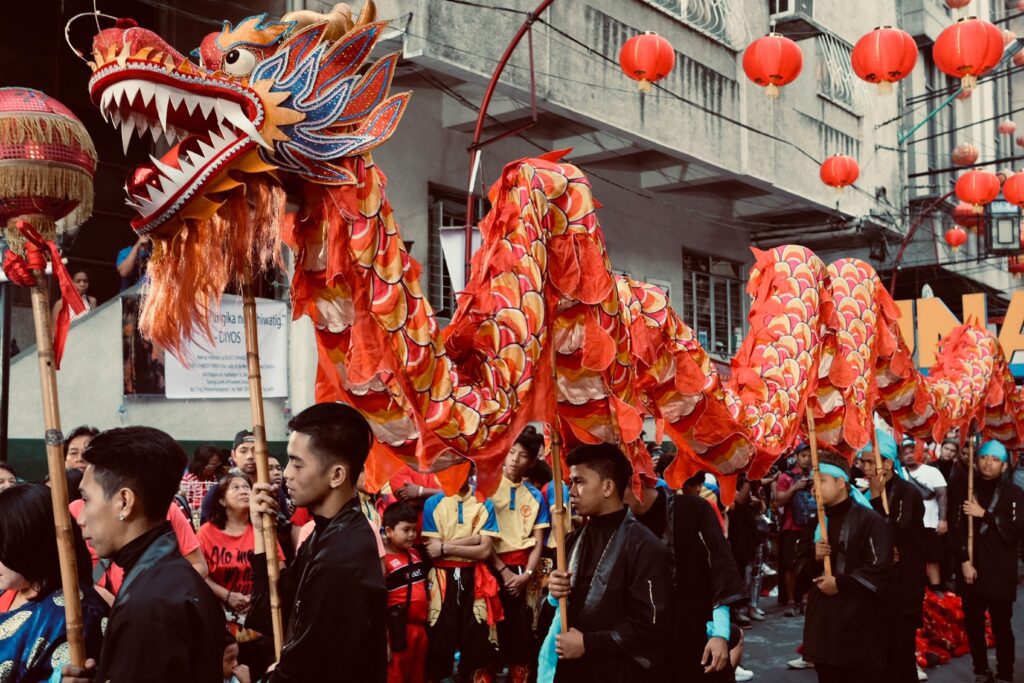
7. Binondo
Binondo, Manila’s Chinatown, is a historic neighborhood filled with colorful markets, restaurants, and shops that offer a unique glimpse into the rich cultural heritage of the Filipino-Chinese community.
The district was established in the late 16th century, making it the oldest Chinatown in the world. It’s a place where you can experience the fusion of Chinese and Filipino cultures.
Binondo is most-known for its amazing foodscene. Here you can find authentic Chinese cuisine, with a wide variety of dishes that range from dim sum and dumplings to noodles and roasted meats. Go on and take a food tour around the district, sampling the delicious offerings from the various street vendors!
Binondo is also home to a number of historic landmarks, including the Binondo Church, which was built in the 16th century and is one of the oldest churches in Manila. The district is also known for its traditional Chinese architecture, with its narrow streets lined with buildings that feature ornate facades and intricate details.
Cost: Free
Hidden Gems in Manila


8. Tales of Illumina
Tales of Illumina is located in the Ever Commonwealth mall in Quezon City. While at first glance it might seem just an interactive museum meant for Instragram (which it does a good job of as a matter of fact!) It’s actually also alot more than it meets the eye. With 36 different themed rooms, it offers plenty of awesome picture-taking opportunities, but more than that what I noticed what it actually provides a lot of information on Philippine folklore and mythology.
They have figures of mythological creatures known as “enkanto” and gives apt descriptions on their qualities. It goes further than that and also shows stories of famous masterpieces of Philippine literature such as “Florante at Laura” and “Ibong Adarna” through exhibits scattered around. I think it’s a really great way to get to know the culture while having fun. Not to mention the amazing acrobatics and dance show! Best of all, you’ll probably be the only ones there!
Cost: 750 PHP (13 USD)
9. National Museum Of Anthropology
The National Museum of Anthropology, also located in Rizal Park, showcases an extensive collection of over 10,000 artifacts, spanning prehistoric times to the present day. It includes archaeological finds, ethnographic objects, and works of art that give you a glimpse to the past.
One of the museum’s most impressive exhibits is the “Baybayin Gallery,” which showcases the ancient Filipino script known as Baybayin. You can learn about the history and significance of the script, as well as see examples of its use in traditional textiles, pottery, and other artifacts.
Don’t miss the “Ifugao Gallery,” which showcases the traditional art and architecture of the Ifugao people, an indigenous group from the northern Philippines. The gallery features a replica of a traditional Ifugao house, as well as examples of their intricate woodcarvings, textiles, and clothes.
Cost: Free
10. Manila Dolomite Beach
Manila Dolomite Beach is a newly-opened beach located along Manila Bay and is a popular amongst locals to catch the sunset. One of the unique features of Manila Dolomite Beach is its use of synthetic dolomite sand, which was added to the beach to create a more natural-looking shoreline. The sand is made from crushed dolomite rock and is similar in texture and appearance to natural beach sand, but with a smoother and finer grain size. It can get crowded during sunset though so be prepared for crowds!
Cost: Free
11. Lagusnilad
Lagusnilad is a historic bridge that spans the Pasig River and is a recognizable landmark of the city. Once a crime hotspot, this newly renovated underpass is now home to a bookstore and a mural celebrating the history of Manila. The bridge has a rich history and has played an important role in the development of Manila’s transportation system.
The original bridge was built in the early 20th century and was named after the Tagalog word “lagusnilad,” which means “where the mud and water meet.” The bridge was a major thoroughfare for commuters and travelers, connecting the districts of Quiapo and Intramuros.
In 2019, the bridge was reconstructed and reopened as a pedestrian walkway, providing a safe and convenient way for people to cross the Pasig River on foot. The new bridge features modern design elements, including a colorful LED lighting system that illuminates the bridge at night.
Cost: Free
Top Things to Do in Manila
12. Test Your Bargaining Skills at Divisoria
If you’re looking for a budget-friendly shopping experience in Manila, Divisoria is a the place to be. Divisoria is a bustling district filled with street vendors, shops, and malls that offer a wide variety of products at bargain prices. The district is known for its wholesale markets from clothing and accessories to electronics and home goods, Divisoria is a shopper’s delight for affordable products that cater to all tastes and needs.
Aside from the wholesale markets, Divisoria is also home to several shopping malls, including 168 Mall and Lucky Chinatown Mall. These malls offer a more comfortable and air-conditioned shopping experience, with a wide range of stores and products to choose from.
Street vendors and stall owners are open to bargaining so you better get ready to negotiate as it’s all part of the fun!

13. Go on a Day Trip
If the city life isn’t what you’re looking for, you can easily take a day trip and find yourself in another world that’s more akin to what you’re expecting with the Philippines.
- Hidden Valley Springs, located in Laguna. This secluded oasis features natural hot springs, waterfalls, and lush greenery, providing a relaxing and rejuvenating retreat from the city.
- Hundred Islands National Park in Pangasinan. The park features over a hundred small islands and islets, each with its own unique ecosystem and beauty. You can go island-hopping, snorkeling, and swimming, or simply soak up the sun on the pristine beaches. Check out how a day trip to this paradise looks like here.
- Mount Pinatubo, for the more adventurous, takes you on a scenic hike up the volcano, located in Zambales. It erupted in 1991 and has since become a popular hiking destination. You can find our hiking experience in this blog post! The trek to the crater lake is easy as it’s mostly flat all the while you are surrounded by stunning views with a unique landscape known as the “lahar fields.” More than that, you can also get up close with the local indigenous Aeta community throughout the hike.
- Tagaytay, located just a few hours south of Manila, is another popular day trip destination. The city is known for its cool climate, scenic views of Taal Volcano, the smallest volcano in the world! and delicious food. You can take stroll along the ridge, go horseback riding, or indulge in some of Tagaytay’s famous bulalo (beef soup) and other local delicacies. An hour away from Tagaytay is an idyllic beach called Matuod which we had a splendid time in.
- Baguio, also known as the “City of Pines,” is a mountain resort town in the Cordillera region, about six hours north of Manila. The city is known for its cool climate, scenic views, and cultural attractions, such as the Tam-Awan Village.
14. Ride Bamboo Bikes (Bambike)
Riding a Bambike is a unique and sustainable way to experience Manila. A bamboo bike, also known as a Bambike, is made from sustainable bamboo and are designed and handcrafted by local artisans.
Riding a Bambike is a great way to support the local community and promote sustainable tourism practices. The bikes are available for rent or guided tours, and visitors can choose from various routes and destinations.
One of the popular Bambike tours is the Intramuros Heritage Tour, which takes visitors on a scenic ride through the historic walled city of Intramuros. Another popular tour is the BGC (Bonifacio Global City) Art Tour, which takes visitors on a ride through the modern business district of BGC.
The tour includes stops at various art installations and galleries, as well as a visit to the Mind Museum. The bikes are equipped with baskets and locks, making it easy and convenient to ride around the city and explore its many attractions.

15. Take a Jeepney
For a true Manila experience, take a ride on a jeepney! Jeepneys are a popular mode of public transportation in the Philippines and are known for their colorful and unique designs. They have since remained a cultural icon for the country.
Jeepneys are a unique mode of transportation that originated in the Philippines after World War II. At the time, the US military had a surplus of jeeps, which were left behind after the war. The enterprising Filipinos saw an opportunity to repurpose these jeeps and turn them into public transportation vehicles. The first jeepneys were handmade with a long bench at the back for passengers and a covered roof for shade and they quickly became a popular mode of transportation in Manila.
Riding a jeepney is a great way to experience Filipino culture and interact with the locals. Passengers sit side-by-side on long wooden benches, and the vehicle stops at various points along the route to pick up and drop off passengers. There’s a lot of jeepney culture to experience, from helping pass money from the back to the driver and vice versa with the change to hanging outside when the jeepney is too full! If you want to go down you can simply shout “Para!” and the driver will stop for you. To pay for your fare, you can say “Bayad po” and fellow passengers will help pass it along to the driver.
Jeepneys operate on fixed routes and have designated stops, but they can also be flagged down anywhere along the way. The fare is usually very cheap (around 0.10 USD) making it an affordable way to get around Manila, just be sure to familiarize yourself with the routes. While jeepneys may not be the most comfortable or convenient mode of transportation, they are an essential part of Manila’s culture.
16. Try Your Painting Skills at Sip & Gogh
If you’re looking for a fun and creative activity, Sip & Gogh might be able to quench that thirst (pun intended.) This unique art studio offers a fun and relaxed environment where you can unleash their inner artist and create your own masterpiece while enjoying a glass of wine or a cup of coffee.
At Sip & Gogh, you can choose from a variety of painting classes, ranging from beginner to advanced levels. Each class is led by a professional artist who provides step-by-step instructions and guidance, making it easy and fun for anyone to create their own work of art. The studio provides all the necessary materials, including canvas, paint, brushes, and aprons, so you don’t have to worry about bringing anything with you except your enthusiasm and creative juices!

17. Enjoy the Nightlife at Makati
Makati is known as the financial capital of the Philippines, but it’s also a popular destination to enjoy the city’s nightlife. The district is home to a wide variety of bars, clubs, and restaurants that cater to all tastes and preferences.
One of the popular nightlife districts in Makati is Poblacion, a lively neighborhood filled with trendy bars, clubs, and restaurants. Poblacion is a great place to start the night, with its rooftop bars and lounges that offer stunning views of the city skyline.
If you’re looking for a bit more up-scaled experience, the bars and clubs in the central business district of Makati offer a more sophisticated atmosphere and often feature live music and entertainment.
Where to Stay in Manila
Manila is a lively metropolis, I would recommend staying in safer areas such as Pasay or Makati not just for safety reasons but also to avoid the noise of night time open-air karaoke sessions or the constant roaring of car engines. Here are some good places to stay in Manila:
Best Hotels in Manila
- The Mini Suites Eton Tower Makati – is a modern hotel located in the Makati district of Manila. It provides stylish accommodations and every room at the hotel comes with a flat-screen TV that has satellite channels. The rooms are equipped with a private bathroom that has a bidet and shower.
- Belmont Hotel Manila – features well-appointed rooms that come with a flat-screen TV, a mini-bar, and a safety deposit box. The air-conditioned rooms also have a private bathroom with bathrobes, a hairdryer, slippers, and toiletries. It’s the perfect hotel if you just have a layover in Manila.
- Golden Phoenix Hotel – offers elegant accommodations with free WiFi access throughout the property. The air-conditioned rooms provide city views and are equipped with amenities like a wardrobe, iPod dock, personal safe, and flat-screen TV. The hotel features a spa, a bar, and a 24-hour front desk offering services like luggage storage, laundry, airport transfers, and tour arrangements.
Best Hostels in Manila
- Lub d Makati – is the largest hostel in the Philippines and an ideal destination for all types of travelers, especially millennials looking for a place to stay and meet like-minded travelers. The hostel offers a second-floor lobby zone where guests can chill out, grab coffee, and delicious food at the PumpHouse. With a co-working space available, workaholics and digital nomads can have a place to work, have a meeting, or conduct private conference sessions.
- Ola! Hostel Manila – all rooms are equipped with air conditioning, free Wi-Fi, private bathrooms with hot and cold showers, and lockers. A Karaoke room is available for free use for all, and a lounge at the reception is available for those who want to watch movies. Free Wi-Fi is available in all areas of the hostel.
- Manila-Z-Hostel – originally conceptualized as a traveler’s space and now the heartbeat of the neighborhood turned capital-of-cool. Carefully curated events happen every night at the roofdeck and in neighboring establishments, promoting local arts, music, and culture.

How to Get Around Manila
- Bus: Buses are available in different sizes, from small shuttle buses to large air-conditioned coaches. They operate on fixed routes and have designated stops along the way. While buses can be a bit slower than other modes of transportation, they are affordable and offer a comfortable way to get around the city especially during the hotter season.
- FX: FX or “service taxis” are a type of shared taxi that also operates on specific routes. They are usually air-conditioned and offer a more comfortable ride than jeepneys. The price is just a tiny bit higher and they might hard to find for non-locals.
- Taxi: Taxis are the most convenient and comfortable way to get around Manila, do be careful of taxi scams and always negotiate the price before going in. Recently ride-hailing apps such as Grab have suffered a blow to the number of active drivers due to the price increase in fuel so demand is higher while supply is lower, be prepared to wait a bit when booking a cab.
- Jeepney: The classic Filipino ride. They are affordable and convenient, and they operate on fixed routes throughout the city. Jeepneys can be flagged down anywhere along the route.
- Metro: The metro or LRT (Light Rail Transit) system is a fast and efficient way to get around Manila. It connects various parts of the city and is especially useful for those traveling to areas that are close to the stations such as Makati. However, the metro can be crowded during rush hour.
- Pedicab: The tuktuks we are all familiar with, classic motorized three-wheeled vehicles, also known as tricycles, that are typically used for short trips within the city. Some actually aren’t even motorized and the driver would just pedal. Tricycles are commonly used in areas where jeepneys and taxis may not be easily accessible but they can actually be very expensive! I would rank it as the 2nd most expensive on this list, with taxi taking 1st place.
How to Stay Safe in Manila
Manila can be a safe city as long as you keep your wits about you. Theft and pickpocketing can be really common so it’s best to leave your valuables at home. You should also know how to get home at night, it’s better to travel with a friend. Be mindful of yourself and your belongings when out partying.
Try to avoid areas such as Malate, Tondo, and Ermita where a lot of seedy and shady places are at. Though tourists aren’t usually targeted, it’s better to be safe than sorry. I recommend getting some travel insurance before making your way to a city like Manila.
Best Time to Visit Manila
Manila has a tropical climate with two distinct seasons: the dry season, which runs from December to May, and the wet season, which runs from June to November.
The best time to visit Manila is during the dry season, when the weather is sunny and pleasant. The months of January to April are generally the driest and most pleasant months to visit Manila. During this time, temperatures range from 24°C to 31°C (75°F to 88°F) with low humidity, making it perfect for outdoor activities and sightseeing.
In contrast, the wet season can be hot, humid, and rainy, with occasional typhoons and flooding. Temperatures during the wet season range from 26°C to 32°C (79°F to 90°F), with high humidity and frequent rainfall.
What to Pack For Manila
- Power adaptors: The power outlets in the Philippines typically use Type A, Type B, or Type C plugs. Type A and Type B plugs are the same as those used in the United States and Canada, with two flat parallel prongs. Type C plugs have two round prongs and are commonly used in Europe and other parts of the world.
- Medications: If you have any prescription medications, be sure to pack enough for your entire trip especially stomach medicine for when you go to the islands. I know I needed it when I got food poisoning in El Nido.
- Lightweight clothing: Manila has a tropical climate, so it’s best to pack lightweight and breathable clothing such as cotton t-shirts, shorts, and skirts.
- Sun protection: Pack sun protection such as sunscreen, sunglasses, and a hat. Manila’s sun can be brutal. Umbrellas make for awesome sun protection too!
- Insect repellent: Mosquitoes and other insects are very common in Manila, especially during the rainy season. The risk of dengue fever or malaria is just not worth it.
- Rain gear: If you’re visiting during the rainy season, pack a lightweight raincoat or umbrella as the rain is quite unpredictable.
Plan Your Trip to Manila | Best Travel Resources
Book Your Accommodations
- Booking.com – the world’s leading online booking platform for accomodations around the world, they have an extensive amount of available listings with zero booking fees and best price guarantees.
- Hostelworld – a backpacker’s best friend, Hostelworld has the largest collection of hostels and guesthouses for affordable prices.
Don’t Forget Insurance
- SafetyWing – from Nomad Insurance, an insurance by nomads for nomads. They understand our lifestyle well and have really comprehensive and flexible plans that cater to any traveler.
Find Cheap Flights
- Kiwi.com – my go-to for booking and finding the cheapest flights and it’s helped me save tons of money. They do virtual interlining which is connecting flights from airlines that do not codeshare, so you can find routes that you wouldn’t be able to find normally.
Join Tours & Activities
- GetYourGuide – is one of the best places to find unique tours and activities. I found that it’s an excellent way to meet fellow travelers and create fond memories. They are not only limited to tours as they also offer niche services such as skip-the-line tickets or private transfers.
Catch a Ride
- Rentalcars.com – nothing beats the freedom of the road, Rentalcars.com is the world’s largest online car rental service. They operate across 160 countries so they’re the perfect partner to work with if you find yourself wanting a ride.

